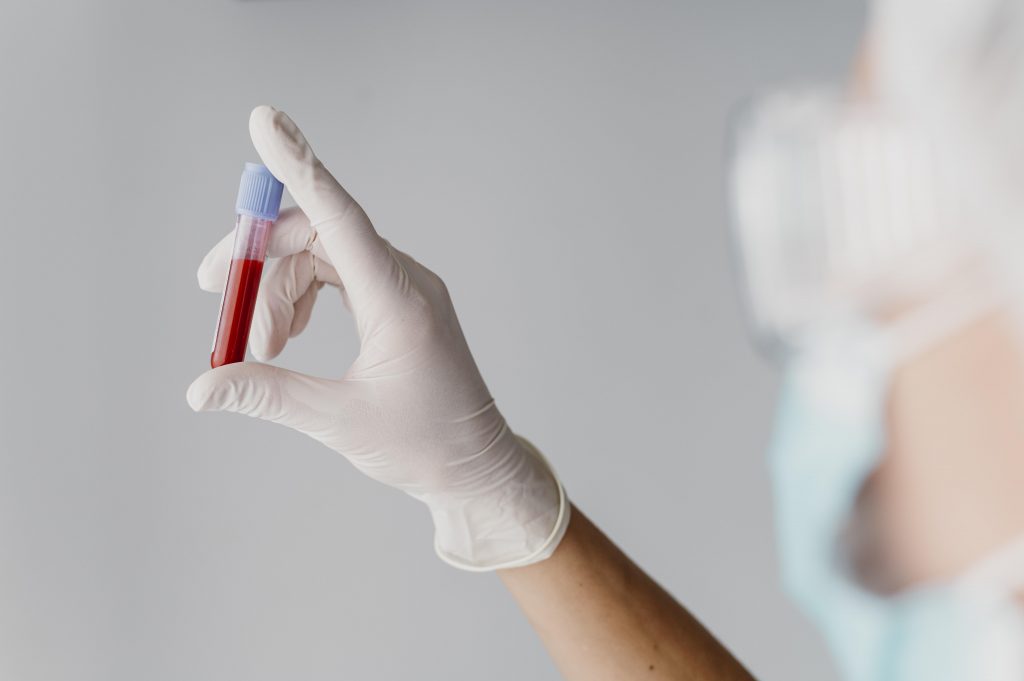The cells in blood that carry oxygen to the tissues in the human body are called red blood cells (RBC). Red blood cells are produced in the bone marrow. By the time when red blood cells get older, they break down in the spleen and liver.
Anemia is a condition that occurs when red blood cells do not supply enough oxygen to the organs and tissues.
As a result of anemia, oxygen transmission to vital organs decreases and complaints occur due to them. There are many different types of anemia depending on the causes.
Signs / Symptoms
What's common signs of anemia disease?
Most of the symptoms of anemia are signs of decreased oxygen delivery to vital organs. Symptoms may not be noticeable at first. However as anemia worsens the symptoms start to seen more often.
The symptoms that are common to many types of anemia are :
- Fatigue
- Paleness
- Headache
- Heart palpitations
- Shortness of breath
- Dizziness (vertigo)
- Pica
- Hair loss
- Cognitive disorders
- Sleep disorders
- Cramps
- Tinnitus
- Fragile nail structure and nail disorders
- Changes in tongue, atrophic glossitis
- Chest pain
Common causes
What's common causes of acute pancreatitis?
There are many causes of anemia. All anemias occur mainly the following 3 reasons:
Have problems with the production of red blood cells
The first step in the production of red blood cells to experience any distress, causes anemia. Examples of this are inadequate diet, low meat consumption. Erythropoietin hormone deficiency and hypothyroidism can be given.
Red blood cells have problems in their structure or function
Thalassemias, glucose 6 phosphate dehydrogenase enzyme deficiency and sickle cell anemia diseases.
Red blood cell destruction or loss of excess production
Anemia is caused by the loss of blood, birth of children, long-term and excessive bleeding and menstruation, surgical operations, and hereditary genetic diseases such as hemolytic anemia.
Departments & Emergency
The first step is going to family physician, who takes the first place in the diagnosis of anemia in patients who show signs of anemia. You may be examined at Internal Medicine outpatient clinic to evaluate your complaints in detail and to see if they depends anemia or other similar diseases. For further tests, you can contact the Hematology clinic which is for blood-related diseases.
Diagnosis
Tests that can be asked to diagnose anemia include:
Blood Tests
- A Complete Blood Count (CBC) test shows the number and size of blood cells. It is very valuable because it offers the ability to monitor the amount of all blood cells together.
- Blood iron level and storage iron (ferritin), vitamin B12, folic acid tests.
Fecal Occult Blood Test
- It is a test that investigates bleeding that may occur in the gastrointestinal tract. In the stool sample of the patient, findings that may indicate previous bleeding. This test is useful for the diagnosis of anemia due to red blood cell loss.
Treatment
The treatment of anemia is based on the type and cause of anemia. The presence of various types of anemia raises various treatments. What all treatments usually have in common is aimed at increasing the amount of red blood cells.
Iron deficiency anemia and other vitamin deficiency which is deficient in iron, vitamins and minerals, diet supplements or supplements in tablet form instead of injections and, if necessary, by putting aims at increasing the production of red blood cells.
The treatment of chronic anaemia, hemolytic anemias and anemias associated with bone marrow disease also includes the treatment of the underlying disease.
This type of anaemia is caused by a variety of conditions, such as anemia, anemia, and anemia. Folic acid supplements and blood transfusions can also be applied to the patient if necessary.
Anemia Drugs
The drugs used to treat anemia are drugs that act on the basis of replacing what the body lacks. It is not recommended to prescribe these drugs without the advice of a doctor and by specifying the necessary doses.
Iron deficiency anemia and vitamin deficiency anemia are missing the active ingredients of the drugs that are used in other vitamins, minerals and trace elements depends mostly on ferrous fumarate, carboxymaltose iron, vitamin C, vitamin B3, and vitamin B6 or multivitamins tablets can be used.
In addition, synthetic erythropoietin hormones are used to trigger the production of red blood cells in anemias. These drugs are the ”epoetin” family. They contain epoetin beta (recombinant human erythropoietin) as the ingredient.
FAQ
What kind of diet should be followed for anemia?
In addition to the treatments recommended by your doctor for anemia, it is recommended that eating foods that increase blood production to improve your anemia. Iron-rich; green leafy vegetables, red meat, chicken, turkey meat, ton fish, eggs, oilseeds, dried fruits. Green grapes, fresh fruits, melons, oranges and juices, artichokes, broccoli, beets, okra. Rich in vitamin B12, dairy products such as red meat, liver, chicken, fish, eggs, milk and yoghurt are recommended to take their place in your daily diet.




Pingback: Asthma - Yesil Health
Pingback: Fibromyalgia - Yesil Health